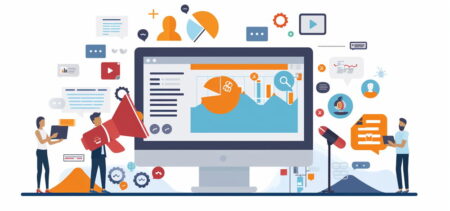In the rapid expanse of business history, the 21st century stands out as a pivotal era, where traditional work paradigms witnessed a seismic shift. This transformation has been driven, in large part, by the burgeoning prevalence of remote work. Once relegated to the sidelines, considered a luxury or a sporadic perk in select industries, remote work has progressed into a mainstream modus operandi. In fact, it’s predicted that by 2025, a whopping 36.2 million Americans will be working from home! Remote working’s impact resonates not just in how businesses operate, but also in how they shape their cultures, values, and visions for the future.
In this article, we’ll look at the impact global events have had on remote work, and how tech advances have not made this model possible, but highly efficient also. In addition, we’ll discuss the digital transformations businesses worldwide have undergone as a result of this shift, as well as the possible challenges managers could experience while overseeing a remote workforce.
The Impact of Global Events on Remote Work Adoption
While the trajectory of remote work was on a steady rise, the world was unprepared for the cataclysmic push it received from the COVID-19 pandemic. As the virus began its relentless spread across countries and continents, governments responded with stringent lockdowns and social distancing mandates. Businesses, big and small, found themselves at a crossroads: adapt to a remote framework or face potential dissolution.
The challenges were manifold. Companies had to ensure that their employees had the necessary tools and technology for efficient remote work, and they grappled with maintaining productivity and ensuring that the essence of their organizational culture wasn’t lost in this abrupt transition.
Technological Catalysts of Digital Transformation
At the heart of the booming remote work landscape lies the pivotal role played by rapid technological advancements. Far beyond merely facilitating remote operations, technology has reshaped and redefined the very fabric of business operations, nudging organizations into the age of digital transformation.
The Origin of a Digitized Workspace
The early 2000s witnessed the advent of high-speed internet connectivity, which served as the bedrock for a connected global workforce. As broadband and mobile internet became ubiquitous, remote work transitioned from a logistical challenge to a feasible reality.
Then came a slew of collaborative tools and platforms, tailor-made for the dispersed workforce.
From communication tools like Slack and Microsoft Teams, to project management platforms like Asana and Trello, these digital solutions transformed virtual teamwork from a cumbersome process into an efficient, streamlined operation.
However, the tech revolution wasn’t limited to these. Advanced CRM platforms, AI-driven analytics tools, and automation software further streamlined business operations, ensuring that companies could operate at peak efficiency regardless of the physical dispersion of their teams. This shift wasn’t just about remote work; it was about reimagining how businesses functioned, interacted, and grew in a hyper-connected digital age.
The Role of Cloud Computing in Remote Operations
Among the pantheon of technological marvels that propelled the remote work era, cloud computing stands out for its transformative impact. What started as a novel approach to data storage and application hosting quickly became the backbone of modern remote operations.
Scalable Solutions for Organizations Everywhere
Before the cloud’s ascendancy, businesses were tethered to physical servers. These infrastructures were not just costly, but also lacked the flexibility and scalability essential for a growing business. Cloud computing changed the game. With platforms like Amazon Web Services, Google Cloud Platform, and Microsoft Azure at the helm, businesses could offload their IT infrastructure, benefiting from on-demand scalability and global accessibility.
The Results of Cloud Computing
This transition to the cloud democratized access. Employees could collaborate on documents in real-time, access mission-critical applications from anywhere in the world, and ensure that data backup and recovery were just a click away. It removed geographical barriers, ensuring that a team member in Tokyo had the same access level as someone in New York.
Additionally, the cloud facilitated an ecosystem of SaaS (Software as a Service) applications. From accounting software to advanced data analytics, businesses could harness the power of top-tier applications without the hefty price tag associated with traditional software procurement.
Collaborative Tools Powering Today’s Virtual Teams
The rise of remote work was accompanied by an influx of digital tools tailored to cater to the dynamic needs of virtual teams. These tools were instrumental in ensuring seamless communication, productivity, and collaboration among teams spread across various geographical locations. Here’s a look at some of the trailblazing tools that have become integral to modern remote operations:
Communication Platforms:
- Zoom: Pioneered virtual meetings, offering features like video conferencing, screen sharing, and webinar hosting.
- Slack: A real-time messaging tool with dedicated channels, direct messaging, and file sharing capabilities.
- Microsoft Teams: Combines chat, video conferencing, and file collaboration, making it a comprehensive communication hub.
Task Management:
- Trello: Visual task management using boards, lists, and cards. It offers a clear view of project statuses and individual responsibilities.
- Asana: Allows teams to plan, organize, and track the progress of tasks with detailed views and timelines.
- Monday: A platform where teams create workflow apps in minutes to run their projects and processes.
Collaboration & Document Sharing:
- Google Workspace: Offers a suite of collaborative tools, including Google Docs, Sheets, and Slides, which allow real-time editing and commenting.
- Dropbox: Cloud storage solution that ensures teams have access to shared documents, images, and videos from anywhere.
- Notion: An all-in-one workspace that combines notes, tasks, and databases.
Reimagining Business Processes for the Digital Age
Businesses are undergoing a significant paradigm shift. No longer content with merely transferring their analog operations into digital formats, they are undergoing a more profound transformation. This involves critically analyzing existing structures and workflows, then redesigning them to harness the full potential of the digital realm.
AI’s Role in Modern Business Processes
Central to this evolution are technologies like automation, artificial intelligence (AI), and data analytics. Automation is proving indispensable in optimizing workflows, reducing redundancies, and ensuring consistency across operations. It’s a game-changer, enabling companies to operate with leaner teams while delivering faster results. On the other hand, AI has emerged as a potent tool in decision-making processes.
It aids businesses in recognizing patterns, predicting market movements, and offering tailor-made solutions to individual customer needs, ensuring a heightened level of personalization and efficiency. Meanwhile, data analytics acts as the compass in this digital voyage, offering deep insights into customer preferences, behavior, and expectations.
By synthesizing vast amounts of data, companies can glean actionable insights that drive strategic decisions, reduce guesswork, and position them better in the marketplace. Collectively, these technological marvels are reshaping the business landscape, pushing companies to reimagine, reinvent, and reposition themselves for a future dominated by digital prowess.
Challenges of Managing a Remote Workforce
The rise of remote work offers unprecedented flexibility and opportunities for businesses and employees alike. However, as with any significant operational change, it introduces its own set of challenges. Traditional in-office management techniques may not be as effective in a virtual environment. Some of the primary challenges include:
Communication Barriers:
- The absence of face-to-face interactions can lead to misunderstandings.
- Virtual communication tools, while useful, can’t fully replace the nuances of in-person conversations.
- Time zone differences can make synchronous communication difficult.
Solution:
To tackle communication barriers, implementing a clear and structured communication plan is crucial. Regular video conferences can help bridge the gap created by virtual interactions, enabling visual cues and building rapport. Moreover, encouraging open and transparent communication, leveraging real-time messaging tools, and setting up dedicated communication channels for different projects or teams can enhance clarity. Being sensitive to time zone differences and setting flexible meeting times can also facilitate effective communication across global teams.
Maintaining Team Cohesion:
- Building a strong company culture remotely can be more challenging.
- There may be fewer opportunities for team-building activities and bonding.
- The risk of employees feeling isolated or disconnected from their colleagues is higher.
Solution:
To foster team cohesion in a remote setting, prioritize virtual team-building activities and regular check-ins. Also, establishing virtual social spaces, such as chat groups for casual conversations, can help recreate the camaraderie of an office environment. Lastly, don’t forget that celebrating personal milestones and achievements through virtual events and online team lunches can further strengthen the sense of belonging and shared purpose.
Monitoring Productivity:
- Traditional supervisory methods might not be effective in tracking remote work.
- Over-monitoring can make employees feel like they’re under surveillance, leading to reduced trust.
- There’s a need to strike a balance between trusting employees and ensuring tasks are completed.
Solution:
Balancing remote work monitoring requires a focus on outcomes rather than micromanaging processes. Define clear expectations and goals for each employee, fostering a culture of accountability. Additionally, consider utilizing project management and task-tracking tools to monitor progress transparently, allowing employees to showcase their contributions.
Technical Issues:
- Remote work is heavily reliant on technology, making it vulnerable to technical glitches.
- Not all employees may have equal access to high-speed internet or reliable devices.
- Ensuring cybersecurity can be more complicated with workers accessing company data from multiple locations.
Solution:
Addressing technical challenges involves equipping employees with the necessary tools and support. To start, providing reliable internet options, hardware upgrades, and cybersecurity training can mitigate vulnerabilities. Businesses can also adopt cloud-based solutions for seamless accessibility and ensure IT support is readily available for troubleshooting technical issues. However, be sure to regularly update security protocols and educate remote workers about cybersecurity best practices that can safeguard company data.
Addressing these challenges requires a shift in managerial mindset and the adoption of tools and strategies tailored for remote work environments. Companies successful in this transition not only mitigate these issues but also harness the full potential of a distributed workforce.
The Bottom Line
The 21st century, marked by the meteoric rise of remote work, stands as a testament to the adaptability and resilience of businesses worldwide. Fueled by technological advances and nudged into prominence by global events, remote work has transitioned from a distant possibility to a dominant professional paradigm.
However, like all transformative journeys, the road to a fully integrated digital business landscape is dotted with challenges. The key lies in proactively addressing these challenges, leveraging advanced tools, fostering clear communication, and building a culture of trust and collaboration.
As the boundaries between the physical and digital continue to blur, it is evident that the businesses of tomorrow will be those that seamlessly integrate both worlds, leveraging the best of what each has to offer. That said, in this period of digital dominance, the message is clear: adapt, evolve, and thrive.






























































